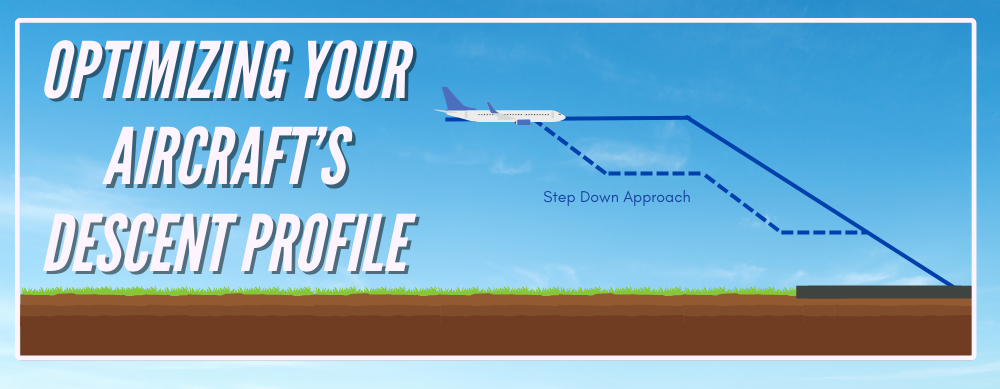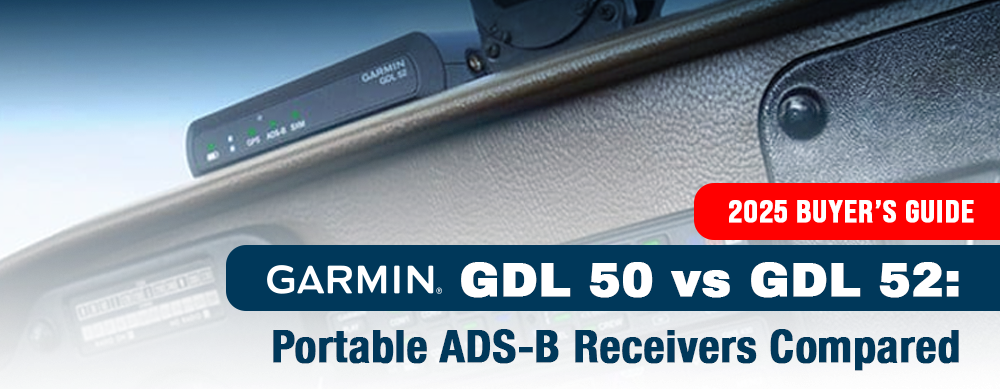It's important to make sure that your flight operations are both economical and safe, a big part of that is planning your descent.
If you focus on having a precise vertical path from cruising altitude to landing, you create a nice, easy ride for your passengers, save fuel, reduce emissions, and meet ATC protocols.
Modern procedures like the Continuous Descent Approach (CDA) give you the power to manage your descents in really innovative ways.
Want to learn more? Well, read on and elevate those keen descent planning skills.
SUMMARY
-
You make your flight safer and more economical by planning a precise descent.
-
The 3:1 rule and groundspeed-based descent rate help maintain a smooth glide path.
-
Continuous Descent Approaches save fuel, reduce emissions, and cut noise pollution.
-
Factors like aircraft weight, wind, and ATC constraints influence your descent profile.

Understanding the Descent Profile
The first thing you might be wondering is: what is a descent profile? Well, an aircraft’s descent profile is the predetermined vertical flight path the aircraft follows when transitioning from cruise to a successful landing.
The purpose of this profile is to meet several critical objectives:
-
Safety: You'll want to maintain a proper terrain and obstacle clearance and the correct altitude.
-
Fuel Usage: It's best to reduce unnecessary engine thrust changes and minimize fuel burn.
-
Passenger Comfort: You don't want your passengers having uneasy stomachs. A smooth descent avoids abrupt changes in altitude.
-
ATC Compliance: Following established procedures and instructions keeps you compliant.

Components of a Descent Profile
Now that we have an understanding of the profile, we need to break down it's components:
-
Top of Descent (TOD):
The TOD is the specific descent point where you, the pilot, initiates the descent from cruising at straight and level flight. Calculating this point accurately is vital if you want to have a gentle transition. -
Rate of Descent (ROD):
This is expressed in feet per minute (FPM), the ROD is the descent speed at which the aircraft loses altitude. An optimal ROD means that your descent remains organized without compromising either safety or comfort. -
Descent Angle:
Most descents are planned around a standard angle—typically about three degrees—which provides a consistent glide path all the way to the runway.

Calculating Your Descent Profile
Figuring Out the Top of Descent
A good and common rule of thumb used by pilots is the 3:1 rule. The formula to estimate the distance from the destination to begin the descent is:
Distance to TOD (in nautical miles) = (Current Altitude - Target Altitude) × 3 ÷ 1,000
Let's try and simplify it. For example, if an aircraft is cruising at 12,000 feet and the target altitude is sea level (0 feet), the calculation would be:
(12,000−0)×3÷1,000=36 nautical miles
This means that the descent should start roughly 36 nautical miles from the destination airport.
How to Establish a Rate of Descent
To maintain a three-degree glide path, another simple calculation is used for the rate of descent.
Multiply the groundspeed (in knots) by 5. Let's do an example, if the aircraft’s groundspeed is 110 knots:
110×5=550 feet per minute
This method helps pilots reach the best descent rate.

Continuous Descent Approach (CDA)
Pilots can choose the Continuous Descent Approach (also known as Optimized Profile Descent or OPD) to help them modernize their descent procedures.
Instead of following the traditional staircase descent—that's where you descend in multiple steps, power up your engines, and then level off—they follow a nice, uninterrupted descent path.
This method offers several advantages:
-
Fuel Savings and Emissions Reduction:
When planes use continuous descents, they can save millions of gallons of fuel each year and significantly reduce CO₂ and other emissions.By implementing new OPD procedures at airports like Dallas-Ft. Worth and Orlando International, there have been substantial environmental and operational benefits.
-
Noise Reduction:
When pilots maintain a constant descent with their engines at near-idle power, they produce less noise than they would with a traditional step-down method. -
Operational Efficiency:
Pilot reduce their workload—and ease ATC coordination—by eliminating multiple level-offs and throttle adjustments during their descent.
Factors Influencing Descent Profiles
While the basic calculations provide a starting point, pilots must consider several factors when planning a descent:
-
Aircraft Weight:
Heavier aircraft might require adjustments in descent rate or power settings to maintain stability. -
Wind Conditions:
Tailwinds or headwinds affect groundspeed, this would influence both the TOD calculation and the rate of descent. -
ATC Instructions:
Controllers may impose specific altitude or speed constraints to manage traffic safely. This would require pilots to modify their planned descent. -
Terrain and Obstacles:
Local terrain and obstacles must be factored in to see that there is adequate clearance throughout the descent.
The FAA's Descent Procedures
On January 13, 2022, the FAA implemented 42 new OPDs (Optimized Descent Profiles) to reduce fuel usage and carbon emissions during descent.
According to U.S. Transportation Secretary Pete Buttigieg, these procedures bring us closer to our goal of achieving net-zero aviation emissions by 2050.

Frequently Asked Questions
-
What is the rule of thumb for aircraft descent?
Pilots often use the 3:1 rule, which estimates that for every 1,000 feet of altitude to lose, the descent should begin about 3 nautical miles from the destination.
-
What is the optimal descent rate?
A common method to determine the optimal descent rate is multiplying the aircraft’s groundspeed (in knots) by 5. For example, at 300 knots, the descent rate would be approximately 1,500 feet per minute.
-
What is the 3:1 descent formula?
The 3:1 descent formula calculates the distance to the top of descent (TOD) using the equation:
Distance to TOD (in nautical miles) = (Current Altitude - Target Altitude) × 3 ÷ 1,000
This quick estimate helps to keep a smooth descent.
-
How do you control the rate of descent?
Pilots control the descent rate by adjusting:
Engine Power: Reducing thrust helps to slow the rate of descent.
Pitch and Drag: Configuring the aircraft with appropriate flaps and landing gear settings.
ATC Coordination: By following precise instructions and making real-time adjustments as needed.
Takeaway
Now you're armed with the knowledge of how to optimize your aircraft’s descent profile. You need to mix in several factors to achieve a safe, organized, and environmentally friendly approach.
Take the tips/steps we shared and calculate the Top of Descent, set your proper rate of descent, and embrace modern techniques like the Continuous Descent Approach.
Pilots can reduce fuel consumption, lower emissions, and provide a smoother ride for passengers.
Interested in Approaches?
Our guides are designed to help!
Did you find this article helpful?
Do you think we missed an important interview question? Let us know in the comments below!





1 comment
Don S
For rate of descent in small (slower) GA planes, I find it easier mental math to add a zero to the GS, then half of that for your target fpm rate. (this essentially amounts to multiplying by 10 and then dividing by 2, which turns out to be the same as multiplying by 5) . But for my mental math, it seems easier. Example speed 90. Add a zero (multiply by 10) and take half. So for example GS 70, is 350 fpm (half of 700); GS 90 is 450 fpm (half of 900), etc.